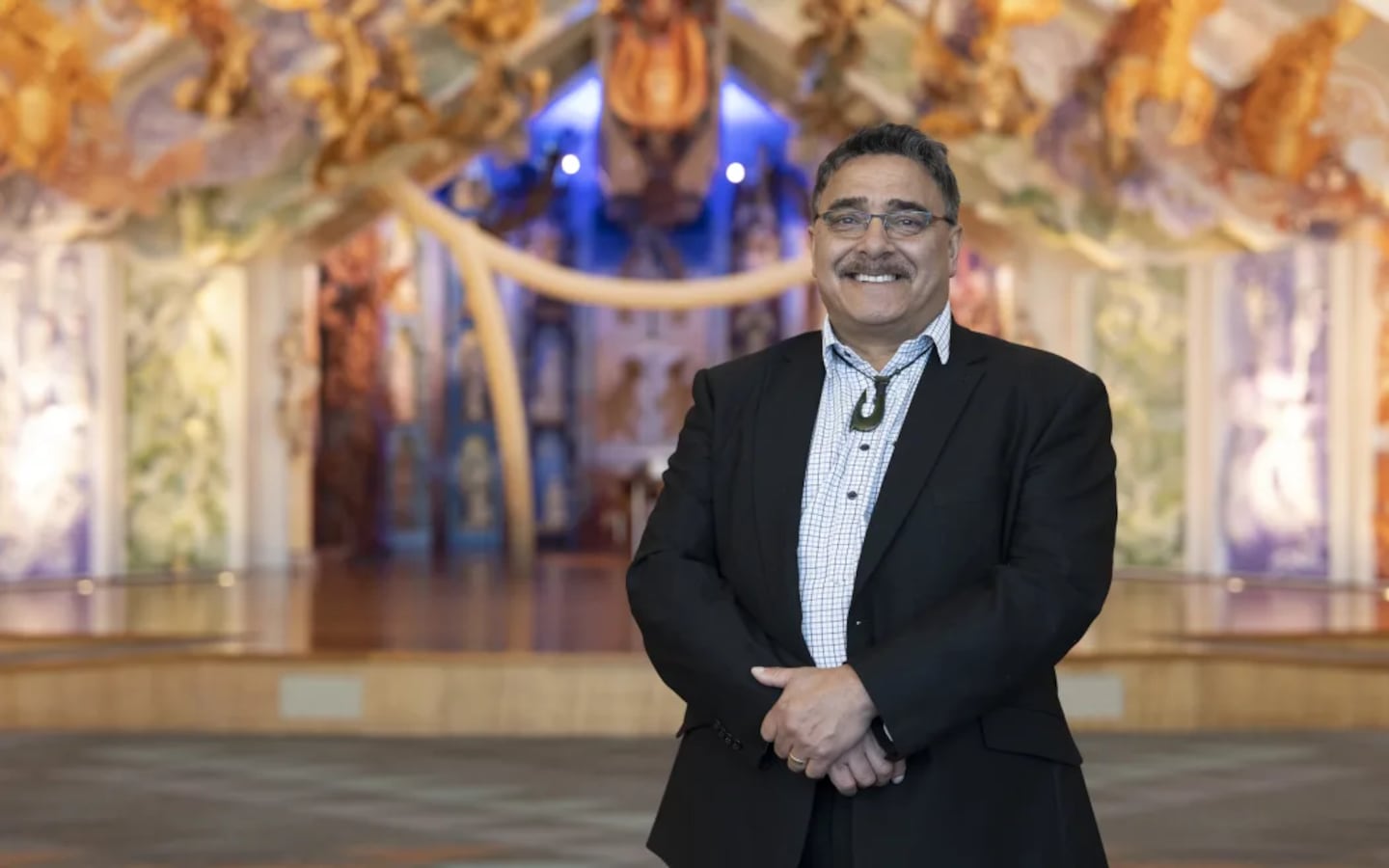This article was first published on RNZ.
The Kaihautū of Te Papa says there could be well over 15,000 pieces of Māori and Moriori cultural heritage in overseas museums and universities.
Arapata Hakiwai, who’s been at Te Papa Tongarewa, Museum of New Zealand in Te Whanganui-a-Tara, Wellington since it opened in 1998, told Māpuna his work with the museum began with an order from academic Sir Hirini Moko Mead.
“He actually said ‘Arapata you should go teaching’ so I went teaching at Wellington High and he said ‘you must go and work for the national museum’. It was very new to me but I found very quickly within the first year or so I was thrown well and truly into the deep end.”
Hakiwai said he soon realised the museum was outdated and needed to change.
“Māori and Moriori ancestors, hundreds, thousands of them were taken, traded, swapped, exchanged, sold to other museums and knowing that our museum was implicitly involved in that at the highest levels.”
He went on to do research on the number of pieces of Māori and Moriori cultural heritage held in overseas museums and universities.
“It’s well over the 15, 16 thousand... and this is just a conservative figure because these figures now would be absolutely updated, there’s well over 33 museums in the United States, well over 30 museums in the UK that hold Māori taonga and many of them hold large numbers. The Field Museum hold probably one of the largest, over two and a half thousand Māori taonga.”
The reality is a large percentage of indigenous cultural heritage is held offshore and a large percentage of that comes from an early period and that heritage should be connected back to Māori and Moriori people, Hakiwai said.
“The sad reality is over 95 percent wouldn’t know off that, wouldn’t be aware of the extent of that or where their taonga are, or who have them.”
This information should be available to Māori and Moriori as matter of right not privilege, he said.
Sir Hirini would often say that there are many unique taonga held overseas that we don’t have equivalent to back in New Zealand, Hakiwai said. Such as Te Rā in the British Museum
The Karanga Aotearoa repatriation programme began in 2003 with a sole focus on tīpuna koiwi or human remains. Hakiwai said many museums throughout the world have agreed to return the tīpuna, a huge change from when the programme started.
Many museums in the international community of museums are realising the old practice of ‘amassing treasures’ can’t continue, he said, but there are still museums who keep acquiring.
The 1984 Te Māori exhibition has had a huge impact and legacy for the relationships between Māori and overseas museums, he said.
“If you take Chicago at the Field Museum, the Field Museum was the last venue of Te Māori and what followed from Te Māori was the restoration of Ruatepupuke, what followed from Te Māori was you had a delegation of staff who traveled over to Tokomaru Bay to say that ‘we would like to do something with respect to Ruatepupuke.’”
The 19th century wharenui Ruatepupuke originally built in 1881 in Tokomaru Bay now at the Field Museum in Chicago by way of Frankfurt in Germany offers a unique example in to how museums can build partnerships with indigenous people.
Hakiwai was involved in the restoration of the wharenui in the 1990s after elders from Tokomaru visited him in Wellington.
“They said ‘our tīpuna whare is over there but it’s unclothed, we need to re-clothe it, it’s lonely, it’s naked and we want to rectify that’.”
Initially he believed the project would culminate with the whare’s repatriation, but his elders told him “Arapata kia tau te mauri, settle down.” They wanted to work with the Field Museum to “reclothe” the whare tūpuna, and it remains in Chicago to this day one of the very few wharenui outside Aotearoa.
Hakiwai said he believes museums can have a higher purpose in society by helping to support and uplift the foundations of culture and identity.
Even if that means it is time for some of taonga within the collections of Te Papa to return home.
“If that is the desire of iwi, hapū and whānau for their taonga to be returned and homed we will work with them to achieve those ends... Having taonga back in their community, in their whenua amongst their people, elevating the histories and their mana and significance surely that’s something far greater than taonga sitting on a shelf,” he said.
It’s part of reconciling what can a museum be rather than blindly following what museums are now, he said.
By Māpuna, RNZ’s Saturday midday show.



